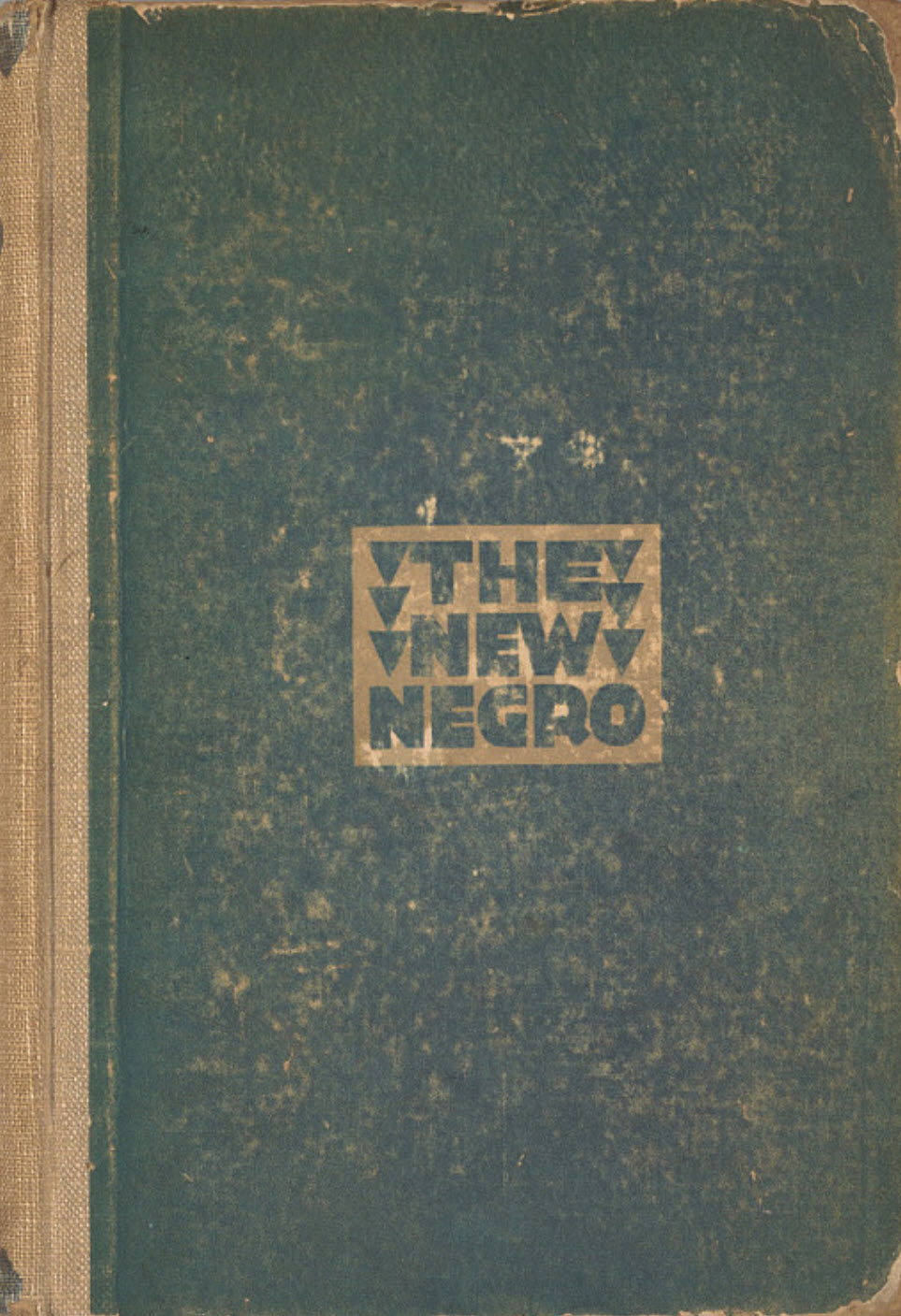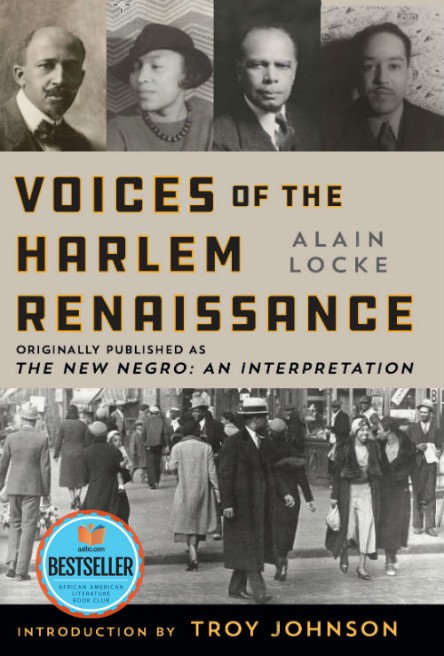Voices of the Harlem Renaissance: Originally Published as The New Negro an Interpretation
Edited by Alain Locke and Introduction by Troy Johnson
List Price: $19.99Konecky & Konecky (Mar 01, 2020)
Fiction, Hardcover, 444 pages
More Info ▶
Read an Excerpt from Voices of the Harlem Renaissance: Originally Published as The New Negro an Interpretation
Description of Voices of the Harlem Renaissance: Originally Published as The New Negro an Interpretation by Alain Locke and Introduction by Troy Johnson
December 2025: The New Negro Celebrates 100 Years Since it’s Publication
 The New Negro: Voices of The Harlem Renaissance was published in 1925 by the Albert and Charles Boni Publishing Company. Dr. Alain LeRoy Locke edited this groundbreaking anthology, which he described as
The New Negro: Voices of The Harlem Renaissance was published in 1925 by the Albert and Charles Boni Publishing Company. Dr. Alain LeRoy Locke edited this groundbreaking anthology, which he described as
“…embodying these ripening forces as culled from the first fruits of the Negro Renaissance [also known as the Harlem Renaissance].”
This preeminent collection introduced the artistic and cultural expression of African American writers, poets, and artists to a wider audience. Almost 100 years later, this treasure trove of innovative work by our foremost thinkers, creatives, and storytellers, continues to inspire and inform a new generation of writers, thought leaders, intellectuals, and activists inciting change today, on a global scale.
Locke was born in Philadelphia, PA on September 13, 1885. A highly accomplished academic and intellectual, he was the first African American Rhodes Scholar and earned a PhD in philosophy at Harvard University. Jeffrey C. Stewart, author of Locke’s critically acclaimed biography, The New Negro: The Life of Alain Locke published by Oxford University Press in 2018, describes Locke;
Alain Locke a tiny, fastidiously dressed man emerged from Black Philadelphia around the turn of the century to mentor a generation of young artists including Langston Hughes, Zora Neale Hurston, and Jacob Lawrence and call them the New Negro — the creative African Americans whose art, literature, music, and drama would inspire Black people to greatness.”
Despite his small stature Locke loomed large in terms of accomplishments. An educator, philosopher, and patron of the arts he is recognized as the “Dean of the Harlem Renaissance,” not only for his literary contributions, but for his behind the scenes work supporting authors, and teaching at Howard University, a historically Black college in Washington, DC, for over 40 years.
From Sacred Fire: The QBR 100 Essential Black Books
Alain Locke is the acknowledged Father of the Harlem Renaissance. A highly educated man and the first African American to be awarded a Rhodes scholarship, Locke served as the bridge between a burgeoning literary expression centered in Harlem, New York, and the mainstream literary world. He brought the star writers of the renaissance, including Countee Cullen, Langston Hughes, and Claude McKay, broad literary attention and patrons—wealthy supporters who provided financial support for struggling writers and artists. In this landmark anthology, Locke set forth the defining characteristics of the new Negro who was emerging in America's northern cities: literary, artistic, cosmopolitan, and urbane.
Published in 1925, The New Negro is an anthology of poems, stories, and essays edited by Locke that includes such luminaries as W. E. B. Du Bois, James Weldon Johnson, Angelina Grimke, Hughes, Cullen, and McKay. It became a “Who’s Who” of the Harlem Renaissance and its defining text. Like the renaissance itself, The New Negro was a symbol of the literary fruit of the great migration of blacks from the rural South to the urban North. Locke was sure that Harlem was fast becoming a new mecca of black artistry and one of the world’s cultural capitals, an assertion that was not hard to argue on the basis of the outstanding work represented in this volume.
The best of the work created during the renaissance—the criticism of Du Bois, the poetry of Johnson and Hughes, the fiction of McKay—has endured. And the Harlem of the 1920s and 1930s remains one of the iconic places in African American history: full of jazz, creativity, and beautiful black people on the move. But what became of the new Negro, that artful and cosmopolitan urbanite? There were lofty expectations, to be sure, but in retrospect and beyond the stardust, the Harlem Renaissance presented to the new Negro a hard lesson: the real work of the culture lay in assuring its permanence, not just basking in the flow of transient praise and voguishness. The artists of the renaissance were heavily dependent on the patronage of their fellow New Yorkers downtown, and Harlem’s renaissance died out with onset of the Great Depression, when the patronage stopped flowing in even as Harlem’s most enduring artists continued to produce important work. Nevertheless, the spirit of the so-called new Negro, the spirit of vital black urban creativity embodied in the works found in this collection, lives on.
You may also find Voices of the Harlem Renaissance at these fine bookstores:
- A Better Life Bookstore, Daytona Beach, FL
- Best Richardson African Diaspora Literature & Culture Museum, St. Augustine, FL
- Community Book Center, New Orleans LA
- DARE Books, Longwood, FL
- The Dock Bookshop, Fort Worth, TX
- Pyramid Art, Books & Custom Framing, Little Rock, AR
Voices of the Harlem Renaissance is distributed by Africa World Press and Black Books Wholesale
Note: eBook and audionbook versions, above, do not contain Troy Johnson’s new introduction
With a New Introduction by AALBC’s Founder Troy Johnson

Additional Book Information:
- ISBN: 9781568528403
- Imprint: Konecky & Konecky
- Publisher: Konecky & Konecky
- Parent Company: Konecky & Konecky
Books similiar to Voices of the Harlem Renaissance: Originally Published as The New Negro an Interpretation may be found in the categories below:
- Art / American / African American & Black
- Fiction / African American & Black / General
- Harlem Renaissance
- History / African American & Black
- Literary Collections / American / African American & Black
- Literary Collections / American / General
- Literary Collections / Essays
